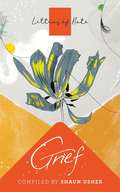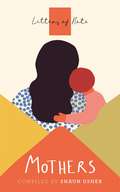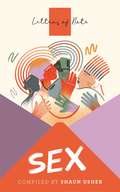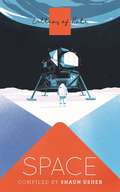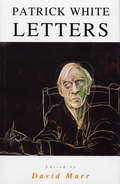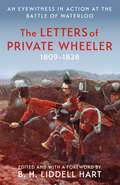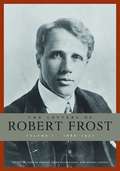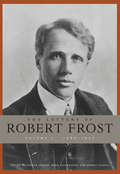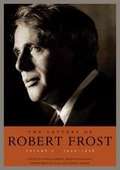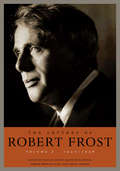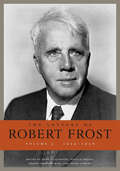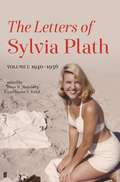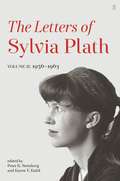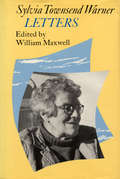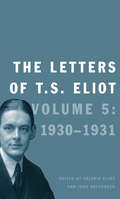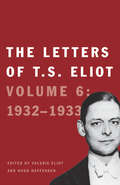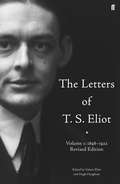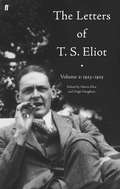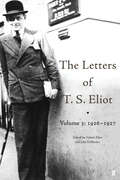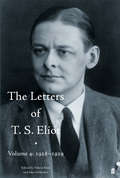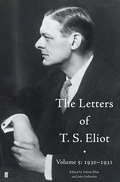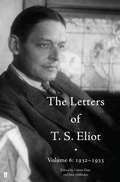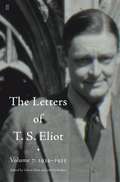- Table View
- List View
Letters of Note: Grief
by Shaun UsherIn Letters of Note: Grief, Shaun Usher gathers together some of the most powerful messages about grief, from the heart-wrenching pain of losing a loved one to reliving fond memories of those who have passed on. Includes letters by: Audre Lorde, Robert Frost, Nick Cave, Rainer Maria Rilke, Sidonie-Gabrielle Colette, Kahlil Gibran, Edith Wharton, Mary Wortley Montagu, Seungsahn Haengwon & many more
Letters of Note: Mothers (Letters Of Note Ser. #7)
by Shaun UsherIn Letters of Note: Mothers, Shaun Usher gathers together exceptional missives by and to mothers, celebrating the joy and grief, humour and frustration, wisdom and sacrifice the role brings to both parent and child. Includes letters by: Caitlin Moran, Sylvia Plath, Martin Luther King Jr., George Bernard Shaw, E.B. White, Laura Dern, Louisa May Alcott, Edna St. Vincent Millay, Bette Davis, Richard Wagner, Martha Gellhorn & many more
Letters of Note: New York
by Shaun UsherIn Letters of Note: New York, Shaun Usher curates a collection of extraordinary written exchanges about the Big Apple, from the marvelling of wide-eyed newcomers and the devoted outpourings of native citizens, to the frustrated outcries of the dispossessed and the fond reminiscences of old-timers. Includes letters by: Italo Calvino, Ralph Ellison Kahlil Gibran, Helen Keller, Martin Scorsese Saum Song Bo, Rebecca West & many more.
Letters of Note: Sex
by Shaun UsherIn Letters of Note: Sex, Shaun Usher collects together some of the most noteworthy missives ever written on the subject, from euphemism-laden, flirtatious exchanges and desire-driven expressions of passion to sincere and thoughtful meditations on the meaning of sex. Includes letters by: John Cheever, Dorothy Day, Frida Kahlo, Margaret Mead, Henry Miller, Anaïs Nin, Mae West & many more
Letters of Note: Space
by Shaun UsherIn Letters of Note: Space, Shaun Usher brings together fascinating correspondence about the universe beyond our planet, containing hopeful thoughts about the future of space travel, awestruck messages penned about the worlds beyond our own and celebrations of the human ingenuity that has facilitated our understanding of the cosmos. Includes letters by: Buzz Aldrin, Isaac Asimov, Marion Carpenter, Yuri Gagarin, Ann Druyan, Stanley Kubrick, Alexander Graham Bell, Neil DeGrasse Tyson & many more
The Letters Of Patrick White: Letters
by David MarrFrom the time when he was a little boy, Patrick White wrote letters - brilliant, gossipy, funny, angry, heartfelt letters. When he died in 1990 at the age of 78, between 2, 500 and 3, 000 of them survived, scattered - and often treasured - all over the world. In the course of producing his much-admired biography of White, David Marr tracked down most of them. Now, with sensitivity and skill, he has assembled a rich selection from the letters to present a fascinating portrait of White in his unihibited words - as a writer, as a friend (or enemy), as a man deeply and painfully engaged with his world.
The Letters of Private Wheeler: An eyewitness in action at the Battle of Waterloo (MILITARY MEMOIRS)
by B.H. Liddell Hart'In a later age he would have become a successful war correspondent ... We have no more human account of the Peninsular War from a participant in all its battles. Vivid images - of people, landscapes, events - flows from his pen ... One of military history's great originals' John Keegan, DAILY TELEGRAPHThese letters, in the form of a frank and amusing diary, were written by a private in Wellington's army who fought throughout the Napoleonic Wars. Private Wheeler's record covers the Peninsular Campaign, keeping order during the coronation of Louis XVIII (whom he called 'an old bloated poltroon') and his later posting to Corfu.Most of all, Wheeler's account of the historic Battle of Waterloo - written before the muskets of battle had cooled - reveals him to be a master of lively anecdote and mischievous characterisation.
The Letters of Robert Frost, Volume 1
by Robert FrostPensive, mercurial, and often funny, the private Robert Frost remains less appreciated than the public poet. The Letters of Robert Frost, the first major edition of the correspondence of this complex and subtle verbal artist, includes hundreds of unpublished letters whose literary interest is on a par with Dickinson, Lowell, and Beckett.
The Letters of Robert Frost, Volume 1
by Robert FrostPensive, mercurial, and often funny, the private Robert Frost remains less appreciated than the public poet. The Letters of Robert Frost, the first major edition of the correspondence of this complex and subtle verbal artist, includes hundreds of unpublished letters whose literary interest is on a par with Dickinson, Lowell, and Beckett.
The Letters of Robert Frost, Volume 2
by Robert FrostThe second installment of Harvard’s critically acclaimed five-volume edition of Robert Frost’s correspondence contains letters from 1920 to 1928, 400 of them gathered here for the first time. His 160 correspondents include family, friends, colleagues, fellow writers, visual artists, publishers, educators, librarians, farmers, and admirers.
The Letters of Robert Frost, Volume 2
by Robert FrostThe second installment of Harvard’s critically acclaimed five-volume edition of Robert Frost’s correspondence contains letters from 1920 to 1928, 400 of them gathered here for the first time. His 160 correspondents include family, friends, colleagues, fellow writers, visual artists, publishers, educators, librarians, farmers, and admirers.
The Letters of Robert Frost, Volume 3: 1929-1936
by Robert FrostThe third installment of Harvard’s five-volume edition of Robert Frost’s correspondence. The Letters of Robert Frost, Volume 3: 1929–1936 is the latest installment in Harvard’s five-volume edition of the poet’s correspondence. It presents 589 letters, of which 424 are previously uncollected. The critically acclaimed first volume, a Times Literary Supplement Book of the Year, included nearly 300 previously uncollected letters, and the second volume 350 more. During the period covered here, Robert Frost was close to the height of his powers. If Volume 2 covered the making of Frost as America’s poet, in Volume 3 he is definitively made. These were also, however, years of personal tribulation. The once-tight Frost family broke up as marriage, illness, and work scattered the children across the country. In the case of Frost’s son Carol, both distance and proximity put strains on an already fractious relationship. But the tragedy and emotional crux of this volume is the death, in Montana, of Frost’s youngest daughter, Marjorie. Frost’s correspondence from those dark days is a powerful testament to the difficulty of honoring the responsibilities of a poet’s eminence while coping with the intensity of a parent’s grief. Volume 3 also sees Frost responding to the crisis of the Great Depression, the onset of the New Deal, and the emergence of totalitarian regimes in Europe, with wit, canny political intelligence, and no little acerbity. All the while, his star continues to rise: he wins a Pulitzer for Collected Poems in 1931 and will win a second for A Further Range, published in 1936, and he is in constant demand as a public speaker at colleges, writers’ workshops, symposia, and dinners. Frost was not just a poet but a poet-teacher; as such, he was instrumental in defining the public functions of poetry in the twentieth century. In the 1930s, Frost lived a life of paradox, as personal tragedy and the tumults of politics interwove with his unprecedented achievements. Thoroughly annotated and accompanied by a biographical glossary and detailed chronology, these letters illuminate a triumphant and difficult period in the life of a towering literary figure.
Letters of Sylvia Plath Volume I: 1940–1956
by Sylvia PlathSylvia Plath (1932-1963) was one of the writers that defined the course of twentieth-century poetry. Her vivid, daring and complex poetry continues to captivate new generations of readers and writers. In the Letters, we discover the art of Plath's correspondence, most of which has never before been published and is here presented unabridged, without revision, so that she speaks directly in her own words. Refreshingly candid and offering intimate details of her personal life, Plath is playful, too, entertaining a wide range of addressees, including family, friends and professional contacts, with inimitable wit and verve. The letters document Plath's extraordinary literary development: the genesis of many poems, short and long fiction, and journalism. Her endeavour to publish in a variety of genres had mixed receptions, but she was never dissuaded. Through acceptance of her work, and rejection, Plath strove to stay true to her creative vision. Well-read and curious, she offers a fascinating commentary on contemporary culture. Leading Plath scholars Peter K. Steinberg and Karen V. Kukil, editor of The Journals of Sylvia Plath 1950-1962, provide comprehensive footnotes and an extensive index informed by their meticulous research. Alongside a selection of photographs and Plath's own line-drawings, the editors masterfully contextualise what the pages disclose.This selection of early correspondence marks the key moments of Plath's adolescence, including childhood hobbies and high school boyfriends; her successful but turbulent undergraduate years at Smith College; the move to England and Cambridge University; and her meeting and marrying Ted Hughes, including a trove of unseen letters post-honeymoon, revealing their extraordinary creative partnership.
Letters of Sylvia Plath Volume II: 1956 – 1963
by Sylvia PlathSylvia Plath (1932-1963) was one of the writers that defined the course of twentieth-century poetry. Her vivid, daring and complex poetry continues to captivate new generations of readers and writers. In the Letters, we discover the art of Plath's correspondence. Most has never before been published, and it is here presented unabridged, without revision, so that she speaks directly in her own words. Refreshingly candid and offering intimate details of her personal life, Plath is playful, too, entertaining a wide range of addressees, including family, friends and professional contacts, with inimitable wit and verve.The letters document Plath's extraordinary literary development: the genesis of many poems, short and long fiction, and journalism. Her endeavour to publish in a variety of genres had mixed receptions, but she was never dissuaded. Through acceptance of her work, and rejection, Plath strove to stay true to her creative vision. Well-read and curious, she simultaneously offers a fascinating commentary on contemporary culture.Leading Plath scholar Peter K. Steinberg and Karen V. Kukil, editor of The Journals of Sylvia Plath 1950-1962, provide comprehensive footnotes and an extensive index informed by their meticulous research. Alongside a selection of photographs and Plath's own drawings, they masterfully contextualise what the pages disclose.This selection of later correspondence witnesses Plath and Hughes becoming major, influential contemporary writers, as it happened. Experiences recorded include first books and other publications; teaching; committing to writing full-time; travels; making professional acquaintances; settling in England; building a family; and buying a house. Throughout, Plath's voice is completely, uniquely her own.
Letters Of Sylvia Townsend Warner: Sylvia Townsend Warner Letters To Rachel, 1950-1952
by S WarnerVery early in her career Sylvia Townsend Warner won recognition of a discerning group of writers and readers on both sides of rare imagination and originality increased with each new publication. In addition to publishing some twenty books she wrote thousands of letters, mainly to close friends and acquaintances, and these quite naturally provide a record of almost fifty years of the writer’s life.As the editor of the selection says, she had a connoisseur’s eye for the bogus and a hatred for assumptions of privilege – her heart was with the hunted, always, and her deep understanding of human behaviour makes the whole a remarkably compassionate volume. Her interests are wide-ranging, and we read of the pleasures of travel, Proust’s shortcomings as a literary critic, current politics, Rupert Brooke at the Café Royal, an eccentric moorhen, the Spanish Civil War.Above all, apart from their intrinsic interest and literary quality, Miss Warner’s letters reveal the special brand of wit and humour that pervades every word she writes.
The Letters of T. S. Eliot: Volume 5: 1930-1931 (Letters Of T. S. Eliot Ser. #6)
by T. S. EliotThis fifth volume of the collected letters of poet, playwright, essayist, and literary critic Thomas Stearns Eliot covers the years 1930 through 1931. It was during this period that the acclaimed American-born writer earnestly embraced his newly avowed Anglo-Catholic faith, a decision that earned him the antagonism of friends like Virginia Woolf and Herbert Read. Also evidenced in these correspondences is Eliot’s growing estrangement from his wife Vivien, with the writer’s newfound dedication to the Anglican Church exacerbating the unhappiness of an already tormented union. Yet despite his personal trials, this period was one of great literary activity for Eliot. In 1930 he composed the poems Ash-Wednesday and Marina, and published Coriolan and a translation of Saint-John Perse’s Anabase the following year. As director at the British publishing house Faber & Faber and editor of The Criterion, he encouraged W. H. Auden, Stephen Spender, Louis MacNeice, and Ralph Hogdson, published James Joyce’s Haveth Childers Everywhere, and turned down a book proposal from Eric Blair, better known by his pen name, George Orwell. Through Eliot’s correspondences from this time the reader gets a full-bodied view of a great artist at a personal, professional, and spiritual crossroads.
The Letters of T. S. Eliot: Volume 6: 1932–1933 (Letters Of T. S. Eliot Ser. #6)
by T. S. EliotThe sixth volume of the personal correspondences of British literary giant T. S. Eliot The letters of T. S. Eliot collected in this sixth volume were written during the years the Nobel Prize–winning poet, playwright, critic, and essayist called, “the happiest I can ever remember in my life.” Penned in large part during his tour of Depression Era America, these letters reflect Eliot’s resolve to end his torturous eighteen-year marriage to his wife, Vivienne, and offer fascinating descriptions of the author’s encounters with F. Scott Fitzgerald, Edmund Wilson, Marianne Moore, and other notable figures.
The Letters of T. S. Eliot Volume 1: Volume 1: 1898-1922, Revised Edition (Letters of T. S. Eliot #1)
by T. S. EliotVolume One of the Letters of T. S. Eliot, edited by Valerie Eliot in 1988, covered the period from Eliot's childhood in St Louis, Missouri, to the end of 1922, by which time he had settled in England, married and published The Waste Land. Since 1988, Valerie Eliot has continued to gather materials from collections, libraries and private sources in Britain and America, towards the preparation of subsequent volumes of the Letters edition. Among new letters to have come to light, a good many date from the years 1898-1922, which has necessitated a revised edition of Volume One, taking account of approximately two hundred newly discovered items of correspondence.The new letters fill crucial gaps in the record, notably enlarging our understanding of the genesis and publication of The Waste Land. Valuable, too, are letters from the earlier and less documented part of Eliot's life, which have been supplemented by additional correspondence from family members in America.
The Letters of T. S. Eliot Volume 2: Volume 2: 1923-1925 (Letters of T. S. Eliot #2)
by T. S. EliotVolume Two covers the early years of his editorship of The Criterion (the periodical that Eliot launched with Lady Rothermere's backing in 1922), publication of The Hollow Men and the course of Eliot's thinking about poetry and poetics after The Waste Land. The correspondence charts Eliot's intellectual journey towards conversion to the Anglican faith in 1927, as well as his transformation from banker to publisher, ending with his appointment as a director of the new publishing house of Faber & Gwyer, in late 1925, and the appearance of Poems 1909-1925, Eliot's first publication with the house with which he would be associated for the rest of his life. It was partly because of Eliot's profoundly influential work as cultural commentator and editor that the correspondence is so prolific and so various, and Volume Two of the Letters fully demonstrates the emerging continuities between poet, essayist, editor and letter-writer.
The Letters of T. S. Eliot Volume 3: 1926-1927 (Letters of T. S. Eliot #3)
by T. S. EliotIn the period covered by this richly detailed collection, which brings the poet to the age of forty, T.S. Eliot was to set a new course for his life and work. Forsaking the Unitarianism of his American forebears, he was received into the Church of England and naturalised as a British citizen - a radical and public alteration of the intellectual and spiritual direction of his career.The demands of Eliot's professional life as writer and editor became more complex and exacting during these years. The celebrated but financially-pressed periodical he had been editing since 1922 - The Criterion - switched between being a quarterly and a monthly, before being rescued by the fledgling house of Faber & Gwyer. In addition to writing numerous essays and editorials, lectures, reviews, introductions and prefaces, his letters show Eliot involving himself wholeheartedly in the business of his new career as a publisher. His Ariel poems, Journey of the Magi (1927) and A Song for Simeon (1928) established a new manner and vision for the poet of The Waste Land and 'The Hollow Men'. These are also the years in which Eliot published two sections of an exhilaratingly funny, savage, jazz-influenced play-in-verse - 'Fragment of a Prologue' and 'Fragment of an Agon' - which were subsequently brought together as Sweeney Agonistes. In addition, he struggled to translate the remarkable work Anabase, by St.-John Perse, which was to be a signal influence upon his own later poetry.This correspondence with friends and mentors vividly documents all the stages of Eliot's personal and artistic transformation during these crucial years, the continuing anxieties of his private life, and the forging of his public reputation.
The Letters of T. S. Eliot Volume 4: Volume 4: 1928-1929 (Letters of T. S. Eliot #4)
by Valerie EliotVolume 4 of the letters of T. S. Eliot, which brings the poet, critic, editor and publisher into his forties, documents a period of anxious and fast-moving professional recovery and personal and spiritual consolidation. Following the withdrawal of financial support by his patron Lady Rothermere, Faber & Gwyer (subsequently Faber & Faber) eventually takes over the responsibility for Eliot's literary periodical The Criterion. He supplements his income as a fledgling publisher, 'just as I did ten years ago, by reviewing, articles, prefaces, lectures, broadcasting talks, and anything that turns up.' His work as editor is internationalist above all else, and Eliot makes contact with a number of eminent and emergent writers and thinkers, as well as forging links with European reviews ('all of which have endeavoured to keep the intellectual blood of Europe circulating throughout the whole of Europe'). Eliot's responsibilities during this period extend to caring for Vivien, who returns home after months in a French psychiatric hospital and whom he looks after with anxious fortitude; and the personal correspondence with his mother closes with her death in September 1929.
The Letters of T. S. Eliot Volume 5: Volume 5: 1930-1931 (Letters of T. S. Eliot #5)
by John Haffenden T. S. Eliot Valerie EliotThe letters between Eliot and his associates, family and friends - his correspondents range from the Archbishop of York and the American philosopher Paul Elmer More to the writers Virginia Woolf, Herbert Read and Ralph Hodgson - serve to illuminate the ways in which his Anglo-Catholic convictions could, at times, prove a self-chastising and even alienating force. 'Anyone who has been moving among intellectual circles and comes to the Church, may experience an odd and rather exhilarating feeling of isolation,' he remarks. Notwithstanding, he becomes fully involved in doctrinal controversy: he espouses the Church as an arena of discipline and order.Eliot's relationship with his wife, Vivien, continues to be turbulent, and at times desperate, as her mental health deteriorates and the communication between husband and wife threatens, at the coming end of the year, to break down completely. At the close of this volume Eliot will accept a visiting professorship at Harvard University, which will take him away from England and Vivien for the academic year 1932-33.
The Letters of T. S. Eliot Volume 6: 1932–1933 (Letters of T. S. Eliot #6)
by T. S. EliotDespairing of his volatile, unstable wife, T. S. Eliot, at 44, resolves to put an end to the torture of his eighteen-year marriage.He breaks free from September 1932 by becoming Norton Lecturer at Harvard. His lectures will be published as The Use of Poetry and the Use of Criticism (1933). He also delivers the Page-Barbour Lectures at Virginia (After Strange Gods, 1934). At Christmas he visits Emily Hale, to whom he is 'obviously devoted'. He gives talks all over - New York, California, Missouri, Minnesota, Chicago - and the letters describing encounters with F. Scott Fitzgerald, Edmund Wilson and Marianne Moore ('a real Gillette blade') brim with gossip. High points include the première at Vassar College of his comic melodrama Sweeney Agonistes (1932). The year 'was the happiest I can ever remember in my life . . . successful and amusing.'Returning home, he hides out in the country while making known to Vivien his decision to leave her. But he is exasperated when she buries herself in denial: she will not accept a Deed of Separation. The close of 1933 is lifted when Eliot 'breaks into Show Business'. He is commissioned to write a 'mammoth Pageant': The Rock. This collaborative enterprise will be the proving-ground for the choric triumph of Murder in the Cathedral (1935).
Letters of T. S. Eliot Volume 7: 1934–1935, The (Letters of T. S. Eliot #7)
by T. S. EliotT. S. Eliot's career as a successful stage dramatist gathers pace throughout the fascinating letters of this volume. Following his early experimentation with the dark comedy Sweeney Agonistes (1932), Eliot is invited to write the words of an ambitious scenario sketched out by the producer-director E. Martin Browne (who was to direct all of Eliot's plays) for a grand pageant called The Rock (1934). The ensuing applause leads to a commission from the Bishop of Chichester to write a play for the Canterbury Festival, resulting in the quasi-liturgical masterpiece of dramatic writing, Murder in the Cathedral (1935). A huge commercial success, it remains in repertoire after eighty years.Even while absorbed in time-consuming theatre work, Eliot remains untiring in promoting the writers on Faber's ever broadening lists - George Barker, Marianne Moore and Louis MacNeice among them. In addition, Eliot works hard for the Christian Church he has espoused in recent years, serving on committees for the Church Union and the Church Literature Association, and creating at Faber & Faber a book list that embraces works on church history, theology and liturgy. Having separated from his wife Vivien in 1933, he is anxious to avoid running into her; but she refuses to comprehend that her husband has chosen to leave her and stalks him across literary society, leading to his place of work at the offices of Faber & Faber. The correspondence draws in detail upon Vivien's letters and diaries to provide a picture of her mental state and way of life - and to help the reader to appreciate her thoughts and feelings.
